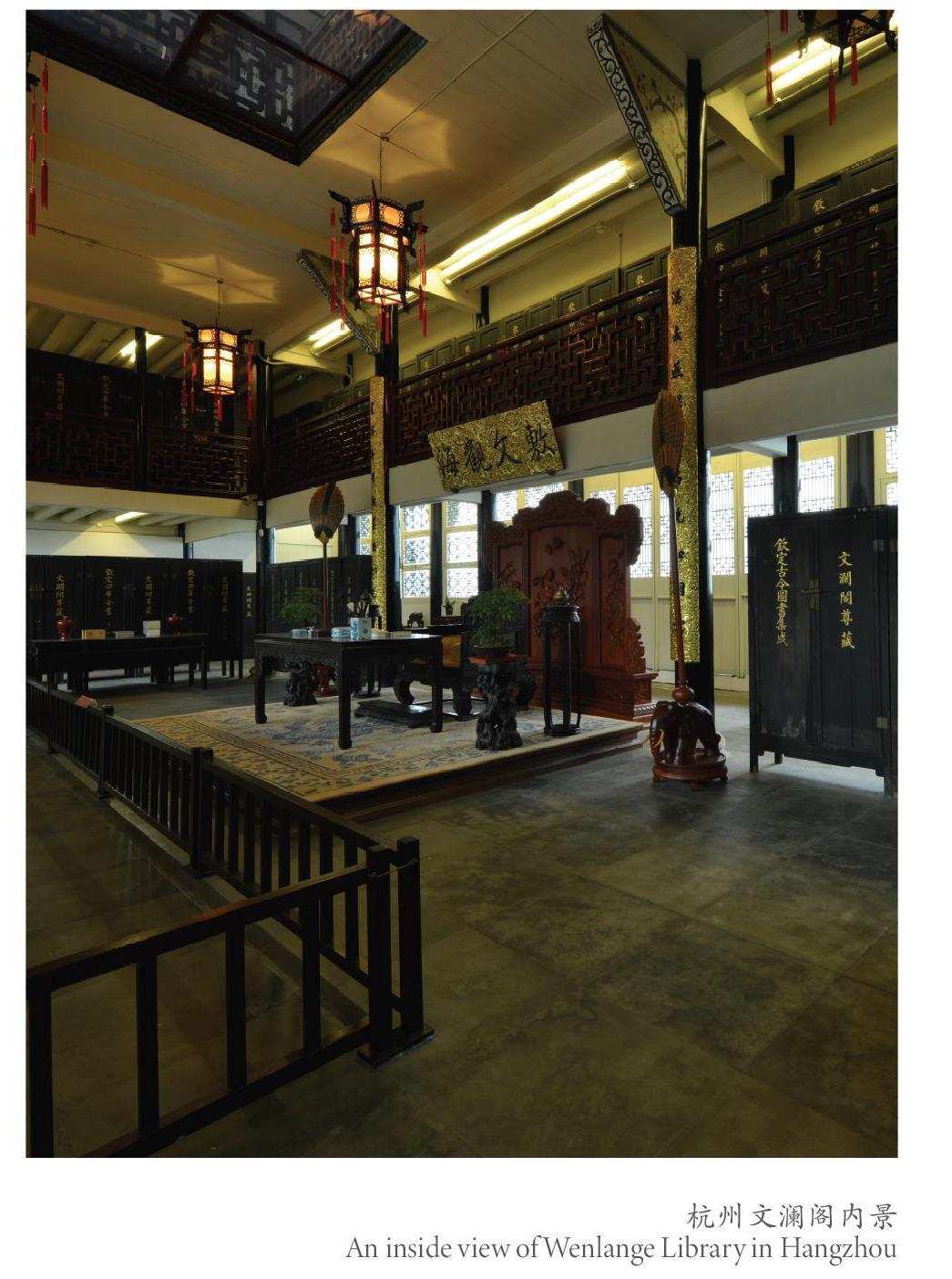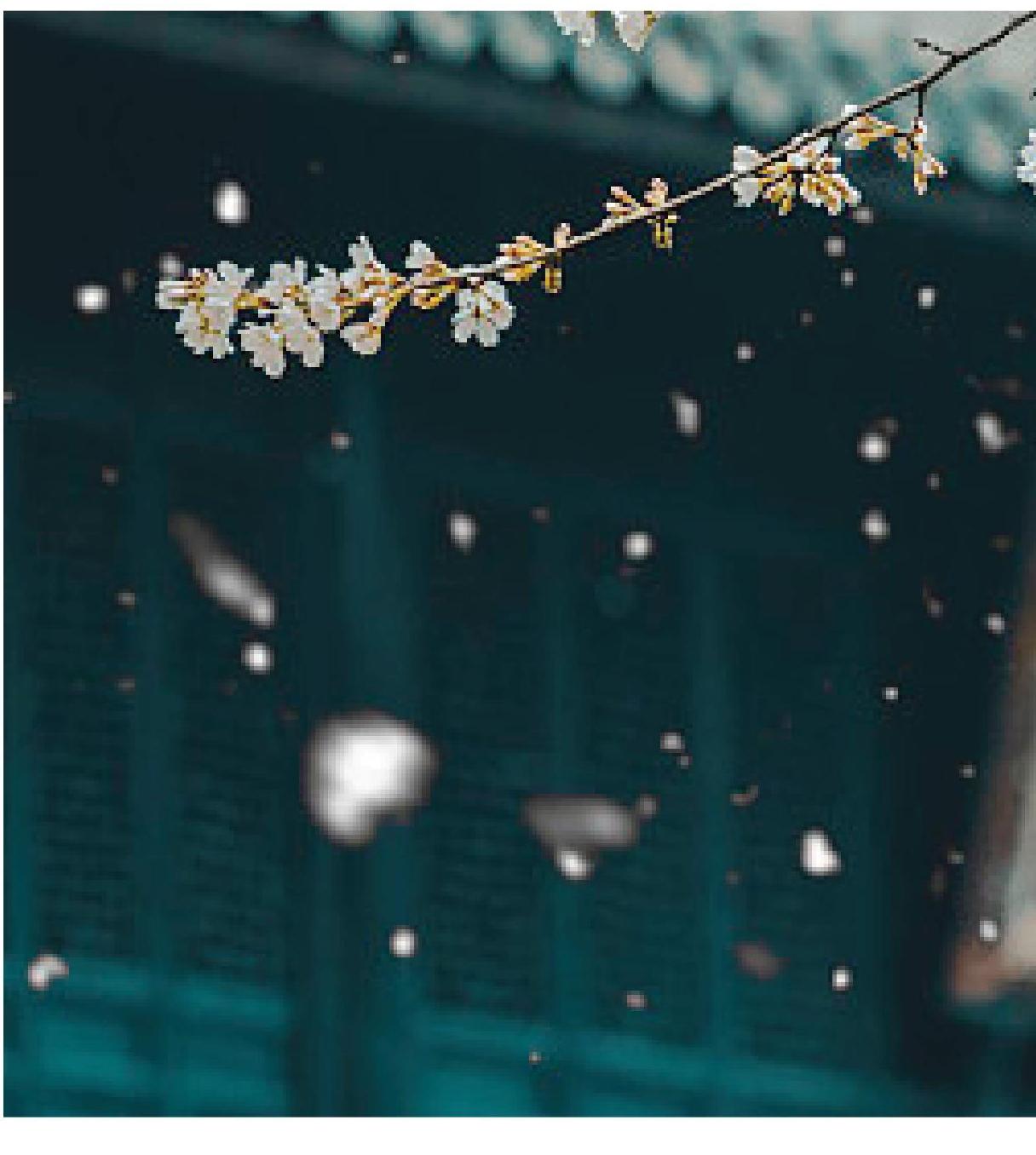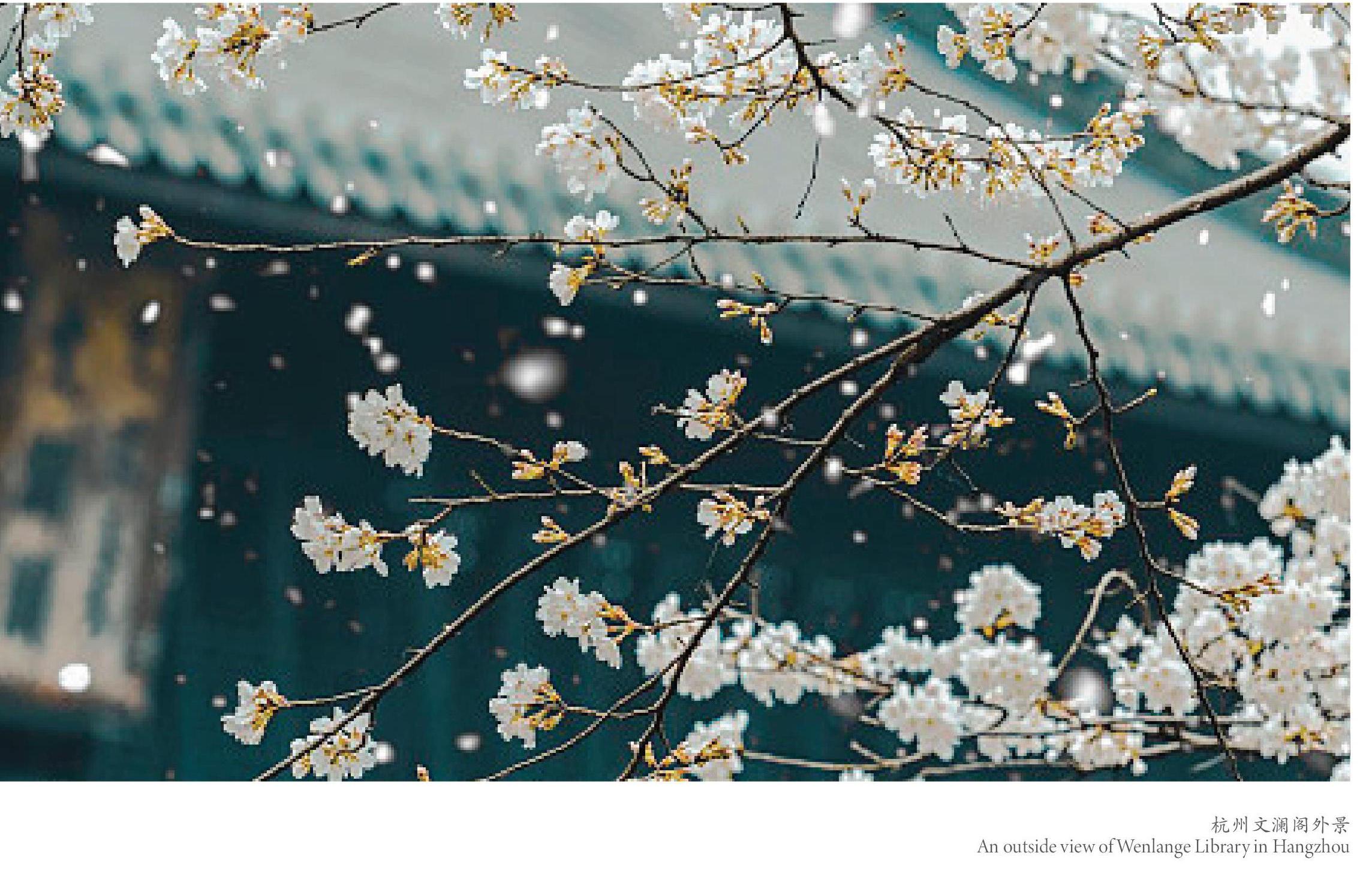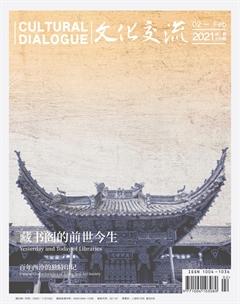文澜阁:藏书史的旷世奇迹



杭州孤山脚下有一座典型的江南楼阁,熟悉它的杭州人都知道,那里曾是为存放国宝《四库全书》而建的皇家藏书楼文澜阁。《四库全书》是当年乾隆下诏编纂的,囊括了乾隆之前中国历史上所有最主要的典籍,直到今天依然是世界上卷帙最为浩大的一套丛书。当时乾隆只命人抄写了四部藏于内廷,后
来又一纸诏令建造了江南三阁各存一部,杭州的文澜阁便由此而来。从此,一座城与一部书的命运紧紧地联系在一起。
如今七部抄本(编者注:乾隆帝命人手抄了七部《四库全书》,下令分别藏于全国各地)留存于世的有四部,分别藏于台湾、兰州、北京和杭州,而文澜阁《四库全书》历经的磨难却非其他几部可比。两百多年来,文澜阁《四库全书》在数次浩劫中几乎陷于毁灭,是浙江几代文化人的侠肝义胆才使其躲过战火幸存下来,真正的原阁本早已剩下不到四分之一,成了一部经后人多次补抄才凑齐的“百衲本”。这是一个在旷世战火中的传奇,也成为浙江人竭力护书抢救文化遗存的历史群像。浙江有识之士自清代至民国犹如接力棒式的藏书、护书与补抄,使文澜阁《四库全书》劫后余生,在中国乃至世界藏书史上都是个奇迹。
因《四库全书》而建
《四库全书》是清代乾隆年间编纂的中国历史上最大的一部丛书。据《四库全书总目》统计,它著录书籍3461种,存目书籍6793种,总计达10254种,囊括了从先秦到清代乾隆以前中国历史上的主要典籍。在18世纪,像《四库全书》这样的文化巨制,不仅在中国,就是在当时的世界上也绝无仅有。
《四库全书》修成以后,为了保管和利用,乾隆皇帝先后下令将其中著录的3000余种书籍抄成一式七部,每部均为36000余册、6100余函,分别收藏于仿造宁波天一阁规制而专门建造的七座藏书阁中。这就是著名的四库七阁,即北京紫禁城的文渊阁、圆明园的文源阁、承德避暑山庄的文津阁、盛京(今沈阳)故宫的文溯阁,以及江苏镇江的文宗阁、扬州的文汇阁和浙江杭州的文澜阁。
文澜阁坐落在西湖孤山南麓,由圣因寺后玉兰堂东面的藏书堂改建而成。蓝色的门牌挂在门楼上,门楼正中嵌有“西湖博物馆”匾额。民国十八年(1929年),西湖博览会在杭州开幕,文澜阁被作为农业馆使用。博览会结束后,成立西湖博物馆,选择文澜阁、王阳明祠、罗汉堂、太乙分青室为馆址。
进入门楼后就来到了垂花门。垂花门又称宫门,建于乾隆时期,现存建筑为光绪七年(1881年)遗存。垂花门两侧厢房也称耳房,现辟为观众休息服务区。垂花门向北经过一座假山,来到的是御座房。御座房现为“文澜遗泽——文澜阁与《四库全书》”专题陈列室,陈列室里系统介绍了文澜阁与《四库全书》的历史变迁,展现了浙江读书人高尚的文化品格与人文精神。
出御座房,经过与西湖相通的水池,文澜阁主体就映入眼帘。文澜阁前石座上原有的四件陈设已遗失,遗失年代不详。据《文澜阁图》以及《文澜阁志》中袁昶《文澜阁铜鹿引》推断,石座上的陈设应为铜鹿和香炉,在2006年的修缮中,浙江省博物馆予以恢复旧观。
文澜阁仿制内廷四阁,均为重檐楼阁。文澜阁的规制为明二层暗三层,匠人们创造性地在腰檐处增加夹层,内为上、中、下三层,扩大了藏书空间。文澜阁夹层上方井口的运用则更有利于书籍的搬运、通风和采光。这些设计体现了古代工匠构思精妙的聪明才智和中国古代木构建筑灵活多变的结构特点。
文澜阁初建时,一层明间设御座和书案,两侧藏《古今图书集成》和《四库全书》经部。文澜阁重建后,一层明间废御座和书案,除《古今图书集成》外,增储《劝善要言》《全唐文》《剿平粤匪方略》等。二、三两层藏书不变,分别为史部和子部、集部。
据了解,文澜阁里的书都是按次序排列在各层,既不能使书之次序颠倒混乱,又不允许架上有高低不齐,《文澜阁志》中就记载了文澜阁排架图。
浙江省藏书文化研究专家顾志兴认为,关于“文澜阁排架图”有两点是需要强调的:一是《文澜阁排架图》是由文澜阁倾圮前具体负责馆务的陆光祺事后凭记忆重绘,后《文澜阁志》据此刻入;二是《四库全书》书匣用楠木特制,楠木书匣上刻有书名、册数。册数多的书,则需数匣分装。书匣的高低根据书的册数制造。书在装匣前又需要用楠木夹板夹紧书册。书入匣后,又将书匣高低相配,制成书架,然后排架庋藏。
当时文澜阁《四库全书》的保存之法从《文澜阁志》的记载中也可看出:每册底面绢裹粘钉不压线。每函用香楠木匣收储,匣内衬以香楠夹板,便抽纳也。素绫牙签,册中夹冰麝樟脑包各二以辟蠹,每岁盛夏暴书凡一月,由盐运使派儒学官掌之,可想见东璧琳琅之美备矣。
历经劫难 重现璀璨
历数清代书阁,或坐落于皇家禁地,远离战火;或遭战火焚毁,阁史中断;或书藏九州,散落四处。惟有文澜阁与其《四库全书》,经历多重磨难与艰辛,在几代浙江读书人不懈努力下,巍巍书阁,重现璀璨。
清咸丰三年,江苏扬州文汇阁、镇江文宗阁惨遭兵燹,夷为平地。咸丰十年、十一年,太平军两次攻占杭城,文澜阁也未逃过战火劫难,阁圮书散。光绪六年十月初八,文澜阁进行了重修,历时一年修复,并把散失、残缺的书籍收集、补抄起来;辛亥革命后又几经补抄,文澜阁的《四库全书》才恢复舊观。
在历次浩劫中几陷于毁灭,是浙江几代人的侠肝义胆才使文澜阁能够躲过战乱而幸存下来。1861年,太平军攻陷杭州,江南著名藏书楼八千卷楼的主人、出身书香门第的钱塘人丁申、丁丙兄弟此时避祸于杭州城西的西溪。一日,兄弟俩在店铺购物时发现,用于包装的纸张竟是钤有玺印的《四库全书》,这使他们大惊失色。丁氏兄弟心急如焚,马上组织家人进行抢救。他们冒着战乱的风险,收集残籍予以保护,并雇人每日沿街收购散失的书本。如此半年,他们抢救并购回阁书8689册,占全部文澜阁本的1/4。
文澜阁本已残缺不全,一项浩繁的抄书工程在浙江巡抚谭钟麟的支持下开始了。丁氏兄弟从宁波天一阁卢氏抱经楼、汪氏振绮堂、孙氏寿松堂等江南十数藏书名家处借书,招募了100多人抄写,组织抄书26000余册。在《四库全书》编撰过程中编撰官员曾将一些对清政府不利的文字删除,或将部分书籍排除在丛书之外,还有部分典籍漏收,丁氏兄弟借此机会将其收录补齐。此项工程历时7年得以完成。1882年,文澜阁重修完成,丁氏兄弟将补抄后的《四库全书》全部归还文澜阁。
到了民國时代,浙江省图书馆首任馆长钱恂继续组织补抄,这就是所谓“乙卯补抄”。这次补抄主要由徐锡麟的二弟徐仲荪及其学生堵申甫二人自费所为,历时七年,甚为艰辛。后来,时任浙江教育厅长的张宗祥对徐仲荪、堵申甫的执着精神所感动,在他的重视及关注下,补抄工作开始由官府组织,费用全部由浙江籍人募集,历时两年,史称“癸亥补抄”。
经过丁、钱、张等人的共同努力,最后完成的文澜阁《四库全书》有36874册,其中乾隆时的原抄本9221册,约占四分之一,其他的为光绪时丁氏或民国时钱氏、张氏等组织补抄。补齐后的文澜阁《四库全书》是7部藏书中最完整的一部。因此,文澜阁本《四库全书》的历史文献价值高于文渊阁本、文津阁本和文溯阁本,是“四库学”研究的重要资源。
1937年,抗日战争爆发,杭州岌岌可危,《四库全书》又面临巨大的灾难。时任国立浙江大学校长竺可桢和时任浙江图书馆馆长陈训慈组织阁书西迁。历时半年,辗转5省,行程2500公里,1938年4月,《四库全书》安全运抵贵阳,后又转运到重庆。
1954年4月,浙江省人民政府将青白山居拨浙江图书馆使用。青白山居位于孤山之巅,面对西湖的阮公墩,空气清新干燥,钢筋水泥建造,是最好的藏书之地。这样,文澜阁《四库全书》便被搬入青白山居落户。
1970年1月,根据当时战备指示,对文澜阁《四库全书》又一次进行了搬迁,目的地是浙南丽水地区的龙泉战备库。这次搬迁虽只是在省内迁徙,但途经富阳、桐庐、建德、兰溪、金华、遂昌、龙泉等7个市县,来回行程达1240公里。1976年,文澜阁《四库全书》重返杭州。
文澜阁《四库全书》如今藏在浙江图书馆孤山分馆恒温恒湿的地下善本库房,这套旷世巨著才有了一个长久安全的栖息之地。
旧时帝王燕今入百姓家
文澜阁作为钦定的官家藏书楼,向社会开放、传播文化,与古代以藏为主的藏书楼显示出截然不同的职能,但与图书馆相比则为远逊。在清末西学潮流滚滚东来这一特殊时代背景下,图书馆取代藏书楼成为必然。
宣统元年,学部下文限各地于宣统二年一律建立图书馆。浙江巡抚增韫据浙江提学使袁嘉谷提议,奏请“于圣因寺行宫余地建筑,俾于与文澜阁毗连一气,……恳请赏给圣因寺行宫内文澜阁旁隙地筹建图书馆”。奏准后,于宣统三年(1911年)开始建新图书馆。经省咨议局讨论,决定将文澜阁归属图书馆,六月,末任阁董张荫椿与浙江图书馆进行了交接。民国元年(1912年)浙江图书馆孤山馆(今古籍部)落成,将文澜阁之书全部移藏图书馆,从此书阁分离。
1929年杭州举办西湖博览会,会后成立西湖博物馆,以后文澜阁又归属浙江博物馆。1981年,文澜阁被列为省级文物保护单位。2001年,文澜阁又被列为全国重点文物单位。文澜阁《四库全书》与藏书楼虽已分离,但作为江南仅存的皇家藏书楼,其建筑遗存一直得到充分保护和利用。2006年起,浙江省博物馆负责对文澜阁进行大修,历时8年。这是文澜阁多次修葺中最近的一次。再繁华的皇家园林也逃脱不了岁月的腐蚀,文澜阁在漫长的岁月侵袭中,更是脆弱到不堪一击。
1861年,太平天国军攻入杭州,本为藏书阁的文澜阁不幸沦为兵营,阁中的藏书也散佚四处。后来,阁中之书或归私家,或归书贾,甚或有流落坊巷间作废纸拆散裹物者。
光绪六年,文澜阁重建。在接下来的漫长岁月中,文澜阁始终没有逃脱被损毁、遗忘、修复的命运。接下来,每隔几年,文澜阁都要大修一遍。修复后的文澜阁仍遵循对外开放的准则,这让普通老百姓也能目睹这百年藏书楼的文化底蕴,而文澜阁《四库全书》影印出版,更是让文澜阁《四库全书》这一历史珍贵典籍更为开放。
2003年5月,时任杭州出版社总编辑徐海荣无意间得知,北京的商务印书馆即将出版文津阁《四库全书》,萌生了影印出版文澜阁《四库全书》的想法,在徐海荣看来,影印出版文澜阁《四库全书》是传承保护的另一种方式。
徐海荣的行动获得了浙江图书馆的支持。2004年5月,合作整理影印出版文澜阁《四库全书》的协议由两家单位共同签署。历经整整10年,修订影印版文澜阁《四库全书》完成最后一卷的印制,并正式面市,首印300套。也就是说,以后文澜阁《四库全书》将不再只是默默存放在地下的馆藏之物。昔日国之瑰宝、皇家御览藏书,而今已“飞入寻常百姓家”。
Wenlange: Imperial Library in Hangzhou
Wenlange on the West Lake was built to house a copy of Siku Quanshu (Complete Collection of Four Treasures), compiled at the edict of Emperor Qianlong. Beginning in 1773, 361 scholars, some of them being high-ranking government officials, collected and annotated over 10,000 imperial manuscripts. From them, only 3,461 titles were selected for inclusion. The works are arranged in four divisions of Chinese literature: classics, history, philosophy, and the arts. Together, this knowledge represents 5,000 years of history, astronomy, geography, economy, society, law, politics, science, technology, and philosophy.
It was not the first collection made by a central government in China, but it was the biggest in the history of China. In fact, before Wikipedia, it was the largest collection of human knowledge in the world.
In order to make the books accessible to readers in China, Emperor Qianlong ordered to have seven copies made. About 3,800 scribes took part in copying the texts by hand, painstakingly recreating every last character stroke in perfect calligraphy. In the original collection, there were 3,461 titles copied from cover to cover and there was an additional list of 6,793 titles, which appeared in the collection as titles only and no contents from these books were copied. Each copy had 36,000 volumes contained in more than 6,100 book boxes. Seven copies were housed at seven sites. They were Wenyuange inside the Forbidden City in Beijing, Wenyuange in the Winter Palace in Beijing, Wenjinge at Chengde Imperial Mountain Resort in Hebei Province, Wensuge in Shenyang, Wenzongge in Zhenjiang and Wenhuige in Yangzhou in Jiangsu Province, and Wenlange in Hangzhou.
Wenlange as the physical imperial library on the West Lake was repurposed from a sutra collection pavilion of a Buddhist Temple. The temple itself was repurposed in 1727 from an imperial palace used by Emperor Kangxi. In 1738, the part of the temple was restored as an imperial palace. When the Siku Quanshu was completed, a special reconstruction project started in 1782 to turn the part of the temple into the library. In 1784, Wenlange was completed. Three years later, the books copied in the capital for Wenlange were shipped in batches to Hangzhou and made their ways into the imperial library on the West Lake.
The library looks like a two-story structure, but it has three floors inside: two main floors and a mezzanine, designed to have more space for storage of books, for good lighting and ventilation, and for convenient move of books.
In the winter of 1861, the Taiping Heavenly Kingdom army conquered Hangzhou. In January 1862, Ding Shen and Ding Bing, two brothers and book collectors who took refuge in Xixi, a suburb in the west of Hangzhou, when the city fell to the Taiping army, found a peddler near where they were living used book pages to wrap candies and melon seeds. They were astounded to find the pages were from books of the imperial Wenlange Library. It turned out that the peddler had in his possession several dozens of books from the imperial collection. That night, the brothers hurried back to Hangzhou and visited the library. The library was a total mess, a lot of books were missing and the remaining books were scattered everywhere. The two brothers instructed clan members to carry books away. The books in the library collected by the Ding brothers were housed temporarily in a temple in Xixi. The Ding brothers then sent people out to the city proper of Hangzhou to find and buy back books and pages wherever they could be found. In six months, they rescued 8,689 volumes from streets. Thanks to their efforts, about one third of the Wenlange collection was saved. Then the brothers decided to make the collection complete again. It took more than 100 scribes eleven years to copy 26,000 volumes, based on books from other libraries across Zhejiang, including some titles which had been originally dropped for political reasons or for reasons unknown. Thanks to the Ding brothers, the collection was made complete again. After the Qing Dynasty fell apart and the Republic of China came into being in 1911, two more projects were launched respectively in 1915 and in 1923 in Hangzhou, largely to restore books to their total volumes or put deleted contents back. The first project was funded and organized by Xu Zhongsun and his disciple Du Shenfu. It took seven years to complete. Shortly after the first project was concluded, Zhang Zongxiang, then education director of Zhejiang provincial government, launched the second copy project. This time, it was organized by the government and funded by individuals across Zhejiang. This project took two years to complete.
Thanks to these copying projects, the Wenlange collection is the most complete of all the seven copies. The Wenlange collection is now an important resource for scholars when they look into all the issues concerning the imperial collection made in the 18th century.
In 1937, Japan launched a total invasion into China. Hangzhou suffered several air raids. Under the guidance of Chen Xunci, director of Zhejiang Library, the books were packed into 139 large cases and relocated to Fuyang and Jiande in the west of Hangzhou and then to Longquan in the south of Zhejiang for safety. In March 1938, the National Government decided to relocate the Wenlange collection to Guizhou Province in the southwest. The books traveled 2,500 kilometers and through five provinces before it reached Guiyang, the capital of Guizhou Province, at the end of April 1938. It was temporarily housed at the Zhang Clan Ancestral Temple there. Then the collection was further relocated to Chongqing, Chinas wartime capital, in Sichuan Province.
In May 1946, about 9 months after China won the victory of the war of resistance against Japanese aggression, the collection started its return journey from Chongqing. It took six trucks and nearly 20 staff members and guards and over 50 days before it came back safely to Hangzhou.
In April 1954, the collection was relocated to Qingbai Resort on the slope of the Solitary Hill. Not far from Wenlange, the modern building of reinforced concrete was ideal for the storage of the collection.
In January 1970, the collection was relocated secretly again to Longquan in the south of Zhejiang due to the intense international situation. The collection stayed there for about six years. It was not until 1976 that it came back to Hangzhou. The to-and-fro journey was 1,240 kilometers long.
Nowadays, the Wenlange collection of Siku Quanshu is housed in an underground environment with constant relative humidity and temperature. Though the imperial Wenlange Library was open to readers in the past, it cant be compared to a modern-day public library. The approval of the central government of the Qing Dynasty, a public library was set up in 1911 and Wenlange became part of the public library. In 1912, the collection was moved to the Ancient Book Department of Zhejiang Library at Solitary Hill. The Wenlange as a historical building became West Lake Museum in 1929 and then became part of Zhejiang Museum. In 1981, Wenlange was put under the protection of the provincial government. In 2001, it was designated as a key cultural relic unit under the protection of the central government. From 2006 to 2014, Wenlange went through a major restoration project by Zhejiang Museum.
Hangzhou Press Group reprinted the Wenlange collection of Siku Quanshu from 2004 to 2014. The first photocopy edition was 300 sets.

